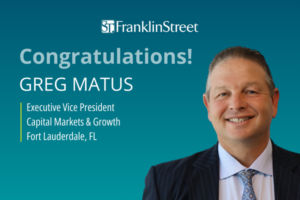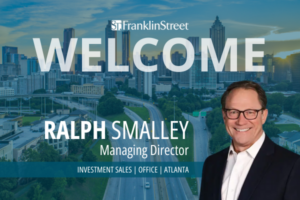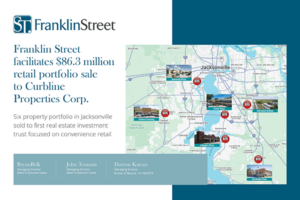A recent report from Credit Suisse signaled tough times ahead for America’s malls: 20% to 25% are predicted to close by 2022. As the number of shopping centers shrinks nationally, landlords have had to scrutinize the retail tenants that fill their properties. No longer subscribed to the “shop until you drop” mentality, consumers are traveling farther and less frequently to high-end shopping centers that combine attractive stores with entertainment experiences.
“Landlords have to be more selective and more proactive,” Franklin Street Senior Vice President of Retail Agency Leasing Cary Beale said. “If landlords are not being proactive, the center is going to fail.”
Beale, who has more than 20 years of experience representing both shopping center landlords and retail tenants, has laid out five essential questions landlords need to consider when looking at a retailer for a shopping center.
1. What is the center’s and the retailer’s target market?
At the Baldwin Park Village Center in Orlando, Florida, Franklin Street’s leasing team has brought in 13 new retailers and restaurants since taking over leasing in May 2016. Most are new-to-market concepts and boutique stores that offer family-friendly options for residents and serve as a destination for those living outside the upscale Baldwin Park community.
Open-air shopping center landlords have increasingly tapped into the large and affluent demographic living in Baldwin Park, a population that enjoys one of the highest average household incomes of any neighborhood in Orange County. The stores include Tactical Brewing Co., a new microbrewery, and Manny’s Original Chophouse, a steakhouse chain known for its road trip-themed décor.
As shopping centers struggle to attract shoppers, particularly millennials who have abandoned the former watering holes of their parents for online shopping, landlords must carefully compare the demographics around their property with the target market of the prospective retailer.
2. What is the center’s main competition?
Understanding the other options shoppers have in the area can help landlords bring in retailers that make their center stand out. Malls close to each other will compete for customers, and having identical stores lowers the probability that either will be chosen.
Nearby big-box giants could sway the competition in their favor. Filling a shopping center several miles from a Target with department stores would set up the landlord for failure.
“Make sure you are best in the market,” Beale said. “You need to know who you are competing against.”
3. What are the retailer’s build-out costs?
Shopping centers have become a riskier investment, making it a less welcoming environment for retail startups. Asking prospective tenants for their estimated build-out costs offers one way to assess their experience in the market.
“Many of these new startup businesses don’t know what the startup cost is, and they evaluate it to be much less than their actual cost,” Beale said. “If they are opening a restaurant and they say it is $100K, and you have built 30 of these and they are actually $300K to $500K, the tenant doesn’t really have its heads wrapped around what it’s doing.”
Prospective tenants willing to spend more, and who have the financing to do so, could prove that they are willing to invest in the success of the center. “It shows the landlord that they are going to fight to succeed,” Beale said.
4. Does the retailer have multiple locations?
Another bellwether for potential retailer success is whether the concept already has multiple locations.
“For a landlord, bringing in a tenant with multiple locations is exciting and we know they have a good record in the past, they are already a proven concept,” Beale said.
Landlords can also use a shopping center to debut an internationally successful brand. At the Santa Anita mall in California, Taiwanese menswear brand Simple, Style, Trend & Casual Life, or SST&C, opened its first U.S. store. The store caters to the large demographic of Asian families living in the area.
5. What is the game plan for the center?
Shopping centers do not become successful from individual deals with tenants. Now more than ever, a holistic experience across all the stores affects the return on investment.
“The biggest mistake landlords make is they don’t look at how the tenants impact the shopping center,” Beale said.
Balance is important. Overutilizing high-use tenants in shopping centers is a common mistake. A landlord might build too many restaurants that have too few parking spaces, leading to frustrated customers and a loss in revenue.
The ideal shopping center leverages a healthy mix of entertainment and exciting new restaurant concepts. Amenities like a movie theater or arcades have become essential, while dining has shifted from franchise-heavy offering to more unique, chef-driven experiences. Celebrity chefs and local farm-to-table options have also been making waves in the market.
As e-commerce and shifting consumer trends continue to pressure malls and shopping centers to adapt, it is more important than ever to find retail tenants that fit the complete vision for the shopping center.
To learn more about this Bisnow content partner, click here.



